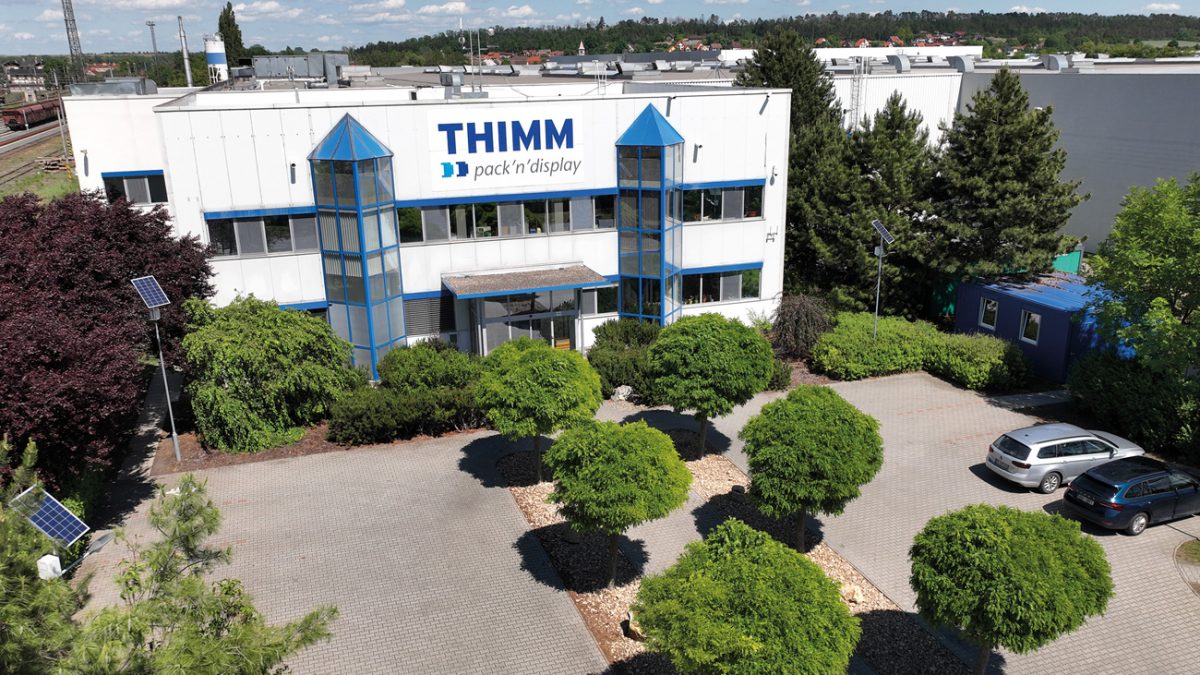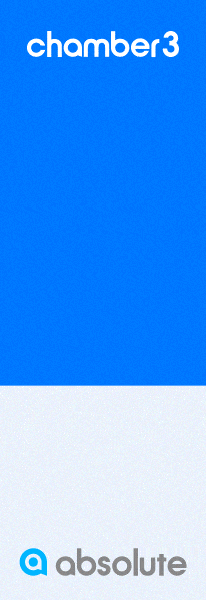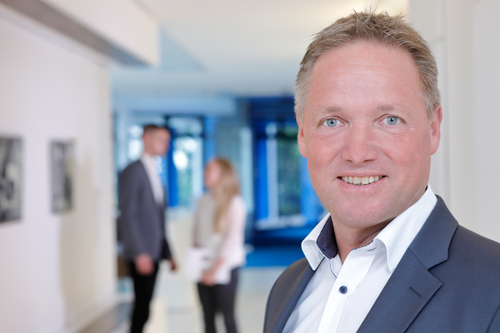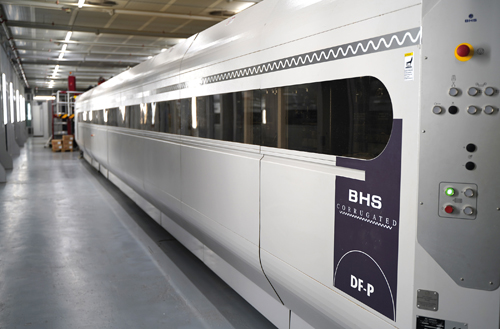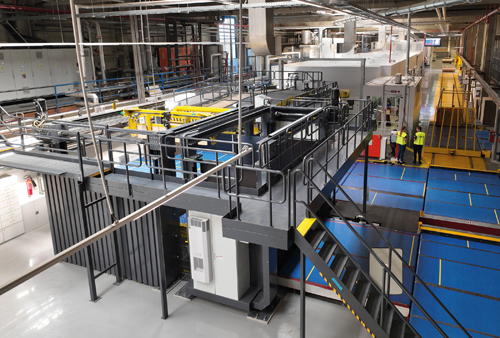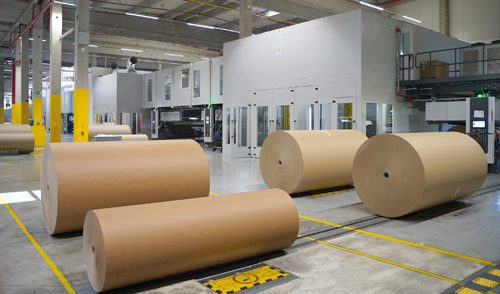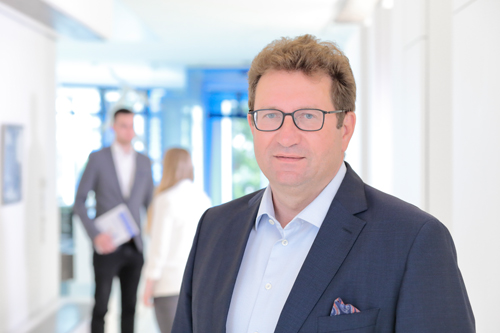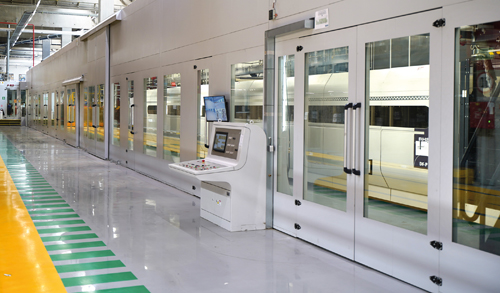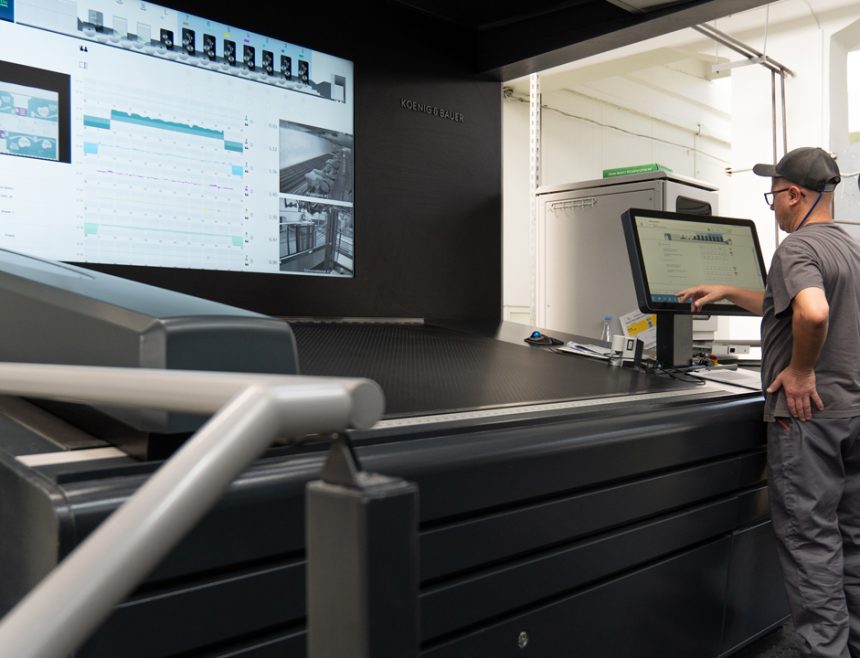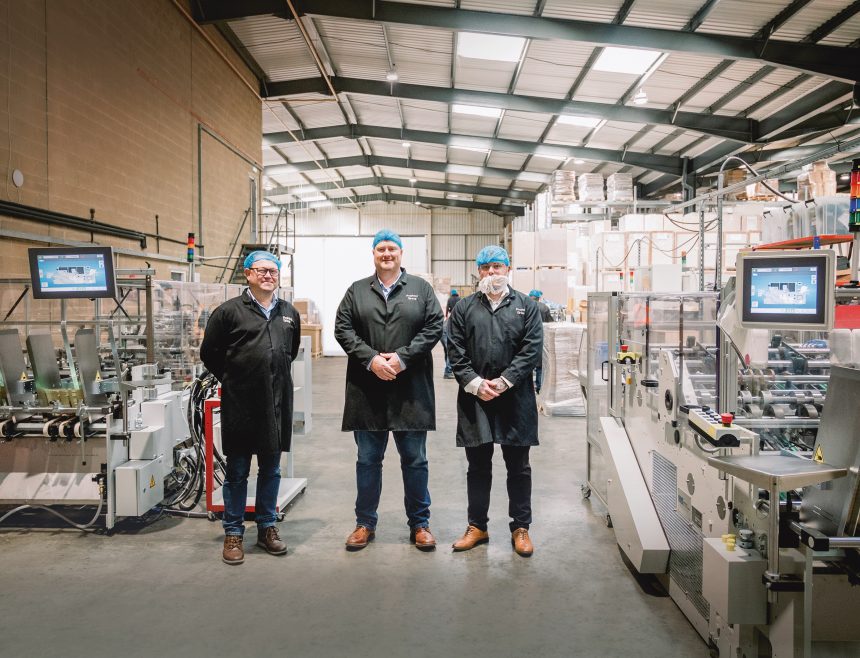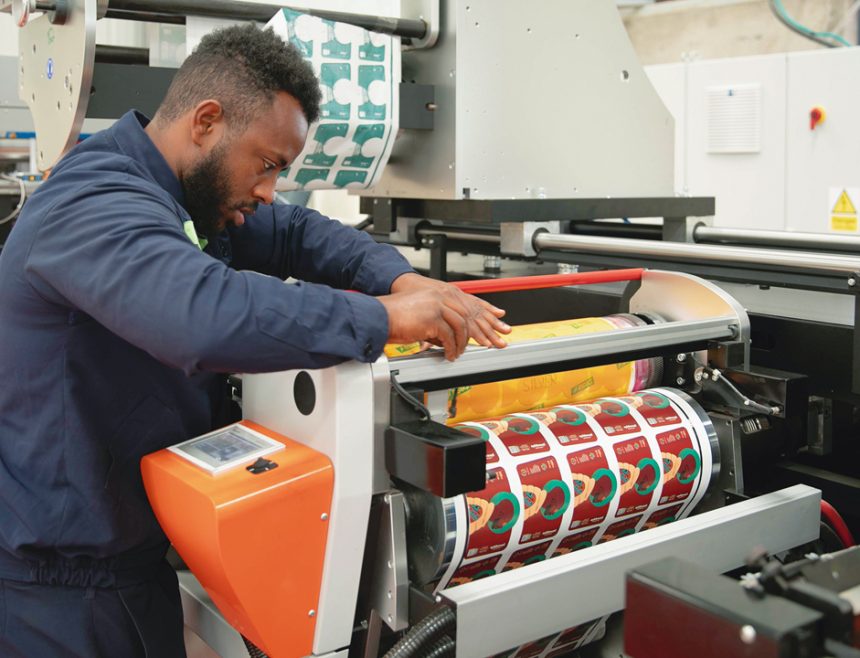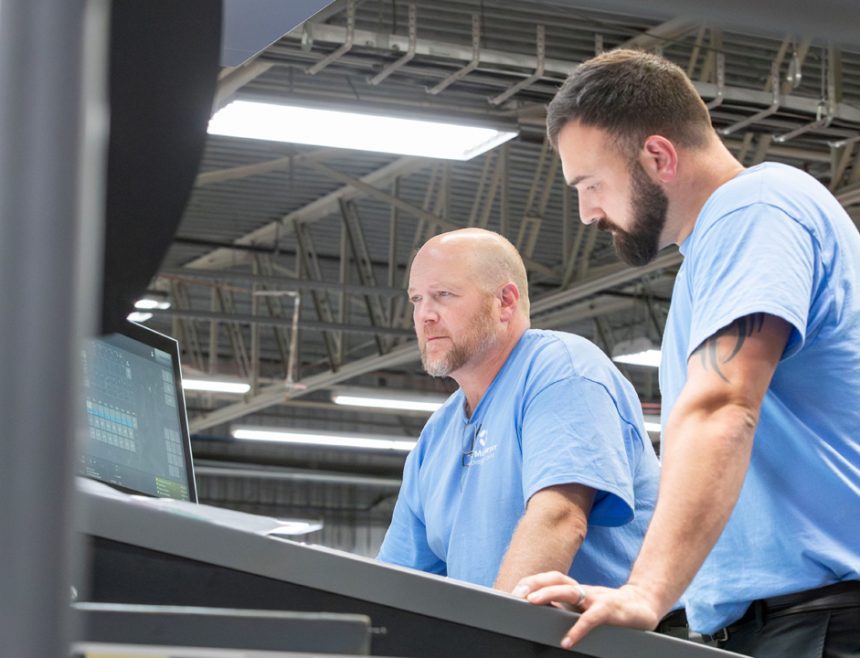Since its founding in 1949, the Thimm Group has always had an eye on technology. Quite simply, pioneering is in its DNA – never afraid of trying things differently, the company was one of the first to centralise its printing, whereby it ran pre-printed rolls from one site, which it then fed to corrugators at its other sites in Germany. Keep expertise in one location and then simply convert that product into finished boxes elsewhere.
Today, through its Christiansen Print business unit, Thimm continues to push the boundaries of print, in flexo and digital pre-print. The company runs an HP PageWide T1100S digital pre-print press, alongside its five analog counterparts. High quality print is at the core, especially as the volume of three-colour (and more) grows in significance throughout Europe. Centralised printing helps keep costs under control.
A journey that began years ago continues to evolve to this day. “We are future-proofing our business, creating the ultimate sustainable company for the packaging supply chain,” says Michael Weber (pictured below), Director Corporate Strategy + Marketing, Thimm Group. “We are driving forward the relationships with existing and future customers and enhancing a true digital business model that will allow us to continue to reduce lead times and reduce MOQs (Minimum Order Quanities), all without creating additional cost. To do this, we need to streamline the processes, both with customers and also internally – and the only way this can be achieved successfully is by way of full digitalization.”
At the core of the modern Thimm business are four pillars: sustainability, supply chain, digital workflow and of course technology. “As the market continues to evolve, we need to be fast, flexible and of course, cost aware,” adds Ekkehard Dürr (pictured below), Managing Director, Thimm Verpackung GmbH + Co. KG. “With a keen focus on FMCG and e-commerce packaging solutions, we are most certainly driven by retail – but to be successful, we need to create a seamless digital supply chain, from mill through to the customer and every step in that process; especially machinery.”
Digital Working Practices
To achieve a digital business model, it is not just about machinery, it is about the data and how it is processed. “We are now using a fully connected workflow, which allows for fully digital approval processes,” explains Weber. “With this system, we control the mechanisms for ‘feeding’ our equipment and at the same time, we are able to reduce waste and reduce our overhead costs. This is a win-win, as it ultimately leads to lower cost across the whole supply chain. The reality is not IF customers will be using a digital supply chain, it is a case of WHEN they will adopt a digital supply chain – and for Thimm and its partners, this is happening now.”
Equipment Partners
Within this digital strategy is not just software and printing equipment, but also the corrugators that produce the board. In the case of the Všetaty site, the company started up a new line from BHS Corrugated in early January 2021.
This corrugator is equipped with newly developed systems from BHS Corrugated called iLFS (intelligent Line Following System) and iCMC (intelligent Cut-to-Mark Control) to process digital pre-printed rolls by reading an individual QR-Code printed to each picture/image. Based on this technology, Thimm is printing ‘single lane/multi job’ and ‘multi lane/multi job’ rolls which are then produced at the BHS corrugator. Dry-end and wet-end order changes are performed automatically based on information provided by the individual QR code. In case of multi-lane jobs, whereby different pre-print jobs are printed next to each other, the system is capable of producing individual orders via both stacker levels.
As a result, the traditionally applied pre-print marks for the cross cut as well as the control line for the slitter scorer are no longer needed. All these functions are covered by the QR-Code and the flexibility for the creation of the pre-print image is therefore increased (can be wider over the working width because there is no control line).
Thimm also benefits from a closed loop correction systems which ensures that both the cross cut and the length cut are always accurate. These features are important in case of short orders, where there is simply no time for an operator to correct manually.
The shortest order length is currently set to 70m and in combination with the Hyper Blade ‘no gap’ order change system, the order change waste is minimised as well.
Comprehensive data handling is essential when running this type of work. A seamless data connection between the planning system to the corrugator is implemented, so there is no manual interference of the operators at the corrugator.
More features of the ‘Digital Line’ in Všetaty include:
- Zero Defect System 1.0 which scans the single faced web at the bridge brake using ultrasonic sensors and Zero Defect System 2.0 which uses Microwave technology to check the finished board after the double facer. Faulty board is evacuated automatically;
- Board Dimension Control to check the values for correct slitting and scoring right after each order change, using a laser scanning system;
- Warp Control System to regulate process parameters in the wet-end automatically to reach perfect flatness of the board;
- AutoPilot function which sets production speeds of the corrugator automatically and which helps further to identify productivity potentials;
- Pressure belt technology at MF-A single facer to avoid marks on the board which is of benefit when running pre-printed or white papers on the inner liner;
- Modul Facer MF-A technology which performs an automatic flute change within less than five minutes from run-to run
The complete line is also connected to the BHS Corrugated iCorr® system, where approximately 3,500 data points are constantly measured and evaluated to ensure a perfect technical condition and highest possible output.
Next Steps
As was announced in May, Thimm recently sold one of its business units to Tricor – member of the Rengo Group. “The sale of the Thimm Packaging Systems business to Tricor is providing us with additional funds that will enable a new, independent financing strategy for our ambitious expansion of the consumer goods business. We plan to double our turnover by 2030,” explains Mathias Schliep (pictured below), Chairman of the Management Board, Thimm Group.
In addition to innovation and sustainability, as an independent family business, Thimm continues to keep an eye on market developments, where the further development of sustainable packaging solutions for the circular economy is becoming increasingly important. Due to the above-average growth of e-commerce and FMCG, the commercial demand for production and storage capacities is also increasing. To this end, Thimm will hugely expand its plants, modernise its machinery, and position itself for the future with consistent digitalization and automation. This shall apply to all Thimm Group locations. Digital printing capacities will also be significantly expanded. Thimm’s sustainable core competence of corrugated board and its innovations in the development of new solutions are at the heart of this.
Schliep concludes, “This backdrop contributes to the increasing demand for sustainable packaging solutions and supports our strategic path of using resources responsibly in the circular economy. Digitalization is at the heart of our solution.”

